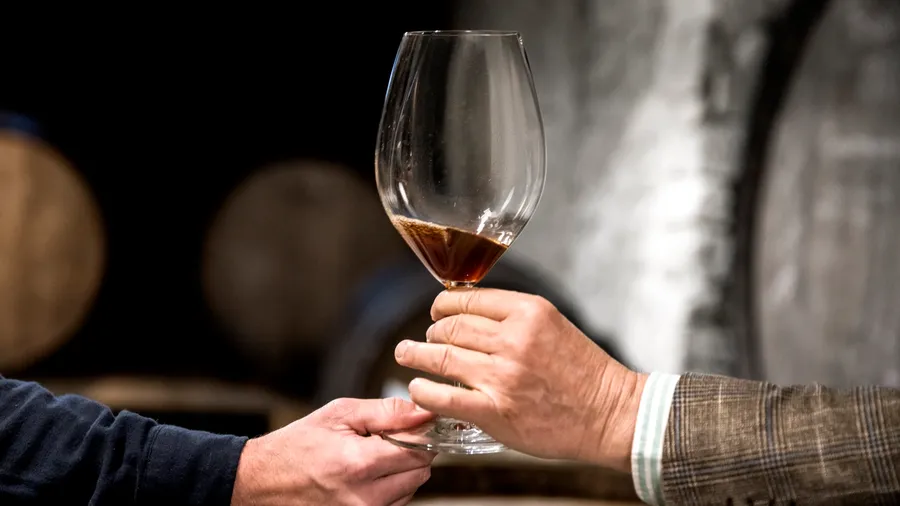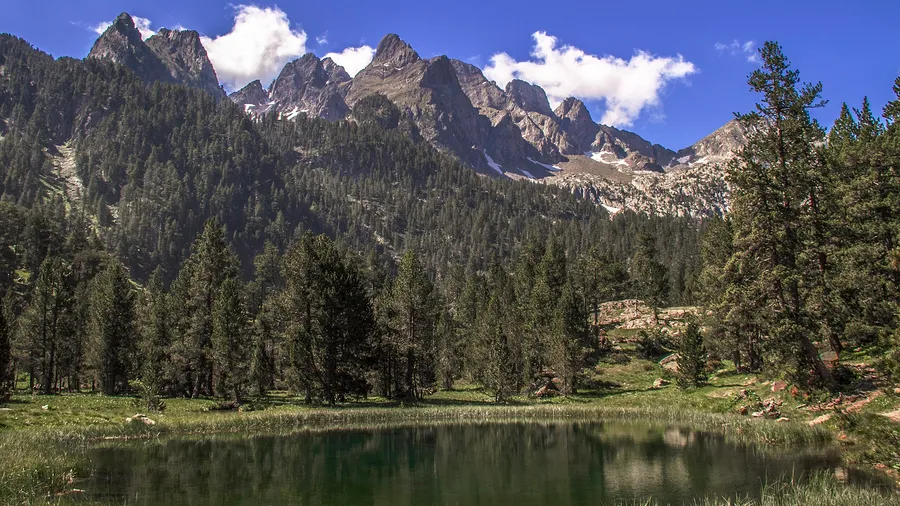Introduction and Selection Criteria
Context on vernacular architecture (80 words)
Start here if you want to understand what you’re looking at. Vernacular architecture means buildings made with local materials and methods, suited to climate and customs: slate roofs in the north, half‑timber in Castile, whitewashed patios in Andalusia, and dry‑stone in Mallorca. It matters because it holds everyday history in its walls and shows how people lived before standardized housing. Touch cool lime on a shaded wall and you feel time slow.
Why visit villages with good conservation (60 words)
You gain a real sense of place, strong photography opportunities, and practical learning about climate‑wise design. Villages benefit from respectful stays: meals at family restaurants, guided visits, and funds for maintenance. You’ll find simple, low‑stress plans: short walks, local museums, and workshops. Bring curiosity, not just a camera.
Criteria used to select the villages (60 words)
We prioritized five factors: high conservation (original layouts, materials), architectural representativeness (clear local typologies), accessibility (public transport or reliable roads), responsible tourism (guided visits, protected status), and overall experience (walkability, viewpoints, small museums). We analyzed official designations, transport timetables, and seasonality to balance ease of visit with authenticity.
How to Read the Profiles: Location, Price, Best Time, Ideal For, What to Do
What each field means (90 words)
Location shows province and nearest transport hub with distances in kilometers and driving times. Price indicates a typical nightly range for a double room on Picuco (low: €60–90, medium: €90–140, high: €140–220+), based on recent seasonal averages. Best time explains climate, light, and crowd patterns. Ideal for helps match your trip style (couples, families, photographers, hikers). What to do lists essential architecture elements and easy activities. Picture the profile as a compact decision card you can act on immediately.
How to interpret prices and availability (60 words)
Ranges vary by season, festivals, and lead time. Expect higher prices on summer weekends and during village events, lower mid‑week outside peak months. Add transport and meals to estimate total costs: many rural restaurants offer menus around €12–18. Always check current prices and availability in Picuco before you lock plans.
Practical tips for using the profile (70 words)
Filter by access first (train, bus, or easy roads), then by your interest (timber frames, patios, dry stone). If traveling with kids, pick short walking circuits and central stays. Combine the profile with the interactive map to measure real travel times and cluster nearby visits. Save favorites and sketch a day‑by‑day plan before booking.
Top 7 Villages with Vernacular Architecture in Spain (practical Profiles)
Set your pace; these places reward unhurried steps and the soft echo of footsteps on stone.
Northern villages (2 profiles)
Combarro (Pontevedra, Galicia)
Combarro concentrates Galicia’s coastal vernacular with hórreos (granite granaries) lined along the Ría de Pontevedra and narrow lanes of stone houses. The old quarter has protected status as a Bien de Interés Cultural since 1972, noted by the Xunta de Galicia.
- Location: 7 km from Pontevedra; 30 minutes by bus; 70 km from Santiago (AP‑9).
- Price: medium (typical €90–140 per double room).
- Best time: April–June, September–October (soft light, fewer crowds).
- Ideal for: architecture photographers, seafood lovers, short walks.
- What to do: identify hórreo types, follow the waterfront lanes, boat trip in the ria, visit nearby Poio Monastery.
- Getting there: regional buses from Pontevedra; car via PO‑308.
- Stay/experience: pick a stone house near the old port; book a heritage walk.
Santillana del Mar (Cantabria)
A textbook medieval town with honey‑colored sandstone mansions, wooden balconies, and the Romanesque Colegiata de Santa Juliana. The historical center was declared Conjunto Histórico–Artístico in 1943 (Spanish heritage register).
- Location: 30 km from Santander (A‑8), 25–35 minutes by car; limited bus links.
- Price: medium to high (€110–180 typical).
- Best time: May–June, September (milder weather, long daylight).
- Ideal for: couples, history fans, slow strollers.
- What to do: terrace‑to‑terrace balcony spotting, Romanesque capitals at the Colegiata, Altamira Museum nearby.
- Getting there: car recommended; check regional buses Santander–Santillana.
- Stay/experience: posada in a restored manor; evening stroll after day‑trippers leave.
Central villages (2 profiles)
La Alberca (Salamanca, Castile and León)
La Alberca showcases half‑timber houses with granite ground floors and chestnut frames above, often filled with adobe. Declared Conjunto Histórico in 1940 (Junta de Castilla y León), it preserves a lived‑in pattern of plazas and fountains.
- Location: 78 km from Salamanca (SA‑210), about 1 h 20 min by car.
- Price: medium (€90–130 typical).
- Best time: spring and autumn (clear air, festivals).
- Ideal for: families, architecture students, food travelers.
- What to do: read facades (stone base, timber grid), visit Peña de Francia viewpoint, taste cured meats and honey.
- Getting there: limited buses; car easiest.
- Stay/experience: casa rural with timber beams; book a local guide to decode construction.
Pedraza (Segovia, Castile and León)
Pedraza’s masonry walls, arcaded plaza, and sturdy balconies present Castilian village architecture in compact form. The town is known for the Noche de las Velas (early July), when candles light streets—confirm dates with the Ayuntamiento de Pedraza.
- Location: 37 km from Segovia (SG‑232), 1 h 30 from Madrid by car.
- Price: medium to high (€110–160 typical, higher during events).
- Best time: May–June, September; avoid candle night if you dislike crowds.
- Ideal for: couples, weekenders, heritage seekers.
- What to do: castle museum, balcony details in the Plaza Mayor, short walks to nearby holm‑oak groves.
- Getting there: car is best; limited bus options via Sepúlveda.
- Stay/experience: inn on a quiet street; book lunch for roast meats.
Southern villages (2 profiles)
Pampaneira (Granada, Alpujarra)
Pampaneira, in the Barranco de Poqueira, preserves Berber‑influenced flat launa roofs, dark stone, and tinaos (covered street passages). The ensemble was protected as Conjunto Histórico in 1982 (Junta de Andalucía).
- Location: 72 km from Granada; 1 h 30 via A‑44 and A‑348 by car.
- Price: low to medium (€70–120 typical).
- Best time: April–June, October–November (avoid peak summer heat).
- Ideal for: hikers, photographers, design enthusiasts.
- What to do: read roof drainage and chimneys, circular walk linking Bubión and Capileira, artisan textiles.
- Getting there: ALSA buses from Granada to Pampaneira (check seasonal timetables).
- Stay/experience: whitewashed apartment with terrace; sunrise walk before day visitors.
Vejer de la Frontera (Cádiz)
Vejer’s whitewashed cubes, inner patios, and narrow alleys adapt to Atlantic light and wind. Declared Conjunto Histórico in 1976 (Junta de Andalucía), it blends Moorish traces with Gaditano courtyards.
- Location: 55 km from Cádiz; 49 km from Jerez Airport; A‑48 then A‑2228.
- Price: medium to high (€100–170 typical, higher in August).
- Best time: March–June, September–October (cool breezes, clearer views).
- Ideal for: couples, food lovers, slow photography.
- What to do: patio trail, sunset at the mirador de la Cobijada, day trip to El Palmar beach.
- Getting there: buses from Cádiz/Algeciras to Vejer; short taxi up to old town.
- Stay/experience: patio‑house stay; reserve a guided heritage walk.
Islands and singular examples (1 profile + micro picks)
Fornalutx (Mallorca, Balearic Islands)
At the foothills of the Tramuntana, Fornalutx is all ochre stone, Mallorcan shutters, and steep lanes built in dry stone. The Serra de Tramuntana’s cultural landscape was inscribed on the UNESCO World Heritage List in 2011, noting traditional agricultural and settlement systems.
- Location: 30 km from Palma; 35–45 minutes by MA‑11; 3 km from Sóller.
- Price: high (€150–220 typical, especially May–September).
- Best time: April–June, September–October (milder heat, golden light).
- Ideal for: hikers, couples, dry‑stone geeks.
- What to do: loop via Biniaraix ravine, facade‑spotting for lime mortar joints, tram to Port de Sóller.
- Getting there: bus from Palma to Sóller, then local taxi or hike.
- Stay/experience: stone townhouse; early morning wander before day trips arrive.
Micro recommendations:
- Garachico (Tenerife): historic core rebuilt after 1706 eruption; basalt masonry, convents, and lava pools; easy base for north‑coast drives.
- Valverde de los Arroyos (Guadalajara): “arquitectura negra” in slate; seasonal waterfalls at Chorrera de Despeñalagua; quiet weekdays.
- Teror (Gran Canaria): wooden balconies from the 18th–19th centuries; Saturday market and basilica square.
Interactive Map of Locations
The map brings everything into one place so you can plot a realistic escape. Pins appear for every village, ready to be toggled by region.
What the map includes (70 words)
You’ll find markers for the seven villages, regional clusters, public transport nodes, suggested viewpoints, short walking circuits, and sample accommodations. Map layers include transport (train/bus stops), lodging (Picuco stays), and walking routes. Each marker links to a short note, the village profile, and a Picuco search filtered to the area. Expect opening hours and festival season flags where available.
How to use the map to plan (70 words)
Start by filtering to your nearest big city, then select two villages within 90 minutes of each other. Use the distance tool to estimate drive or bus times, and save favorites with notes like “good balcony street” or “sunset lookout.” On mobile, download an offline copy if offered and star your lodging and parking. Keep an eye on elevation; mountain roads take longer than straight lines suggest.
Extra links, layers, and resources (60 words)
Add optional layers for forecast weather, heritage sites, tourism offices, and parking. Cross‑check with official municipal websites for event dates and local restrictions. Save a PDF of key maps and your booking confirmations. Use Picuco’s filters with the map open to align stays, bus stops, and walking circuits in one view.
Recommended Itineraries and Escape Combinations
You don’t need a marathon; string two or three places at a human pace and leave room for serendipity.
Short escapes: weekend (2–3 days) (100 words)
- Galicia Coast Duo: Day 1 Pontevedra + Combarro old quarter; Day 2 hórreos at low tide and Poio Monastery. Drive/bus segments under 40 minutes.
- Castile Stone Loop: Day 1 Segovia + Pedraza; Day 2 La Alberca via Salamanca outskirts. Expect 1–1.5 hours per leg.
- Alpujarra Taster: Base in Pampaneira; half‑day village architecture walk, half‑day loop to Bubión and Capileira. Start early to avoid heat. Optimize by booking central stays and pre‑selecting two meals; you’ll spend less time deciding and more observing.
4–7 day itinerary (100 words)
Fly into Madrid and rent a car or use regional buses. Day 1: Segovia + night in Pedraza. Day 2: drive to La Alberca (1 h 40), afternoon in the old quarter. Day 3–4: Granada base; day trip to Pampaneira (1 h 30). Day 5–6: Cádiz base for Vejer (45 minutes). Day 7: return via Jerez Airport. Best seasons are April–June and September–October for daylight, temperatures, and fewer crowds. If traveling by bus, trim to three bases and add taxi links for last miles.
Thematic combinations (100 words)
- Photography Light Chase: Vejer (golden alleys), Combarro (dawn hórreos), Fornalutx (evening stone glow), sunset in Santillana’s plaza. Keep a light kit and shoot early/late.
- Rural heritage deep‑dive: La Alberca timber frames, Pedraza masonry, Valverde de los Arroyos slate (day trip). Schedule one guided visit per stop.
- Hike and Rest: Fornalutx–Biniaraix, Pampaneira–Bubión, clifftop strolls near Vejer. Walk mornings, nap afternoons.
- Food trail: Galician seafood in Combarro, roast lamb in Pedraza, honey and embutidos in La Alberca, retinto beef near Vejer. Reserve weekend lunches.
Tips for Choosing the Right Village (accessibility, Conservation, Lodging)
Aim for fit over FOMO; the right match makes the architecture speak to you.
Assessing accessibility and transport (80 words)
Check options in this order: regional train/bus to a hub, bus/taxi to the village, and road quality if you’ll drive. Use real timetables for weekdays vs weekends. Note last‑mile options: licensed local taxis, short walks from stops, or bike rentals. Without a car, prioritize villages with hourly buses (e.g., Combarro via Pontevedra) or plan one taxi leg each way.
Signs of good conservation and management (70 words)
Look for active traditional use (homes, shops), original materials (timber, stone, lime), discreet modern upgrades, and heritage signage describing methods and dates. Avoid places where PVC windows or exposed concrete dominate. Ask the tourist office about restoration guidelines and any “Conjunto Histórico” designation; official status (BIC) often correlates with better maintenance and interpretive resources.
Lodging and services: what to look for (70 words)
Target casas rurales, inns, or apartments inside historic cores with documented renovations. Confirm essentials: heating/AC, breakfast options, restaurant hours, and proximity to a small shop or bakery. Match budget to experience: central stays cost more but save time. If you’re self‑catering, confirm market days and kitchen basics. Read recent reviews for noise and parking notes.
Frequently Asked Questions (faqs)
A little prep removes most friction, leaving you with quiet lanes and clear choices.
Logistics and safety (60 words)
These villages are generally safe; use common sense after dark and in low‑traffic lanes. Store the European emergency number 112 and your lodging’s phone. Check seasonal road advisories in mountain areas. Carry cash for small purchases, and confirm weekday opening hours for museums and restaurants.
Costs, season, and reservations (60 words)
Prices rise on summer weekends and during festivals, and fall mid‑week in shoulder seasons. Many stays offer 48–72 hour cancellation with partial refund; always read the policy. Book 2–4 weeks ahead for spring/fall weekends, earlier for August or special events like Pedraza’s candle night.
Sustainability and responsible behavior (60 words)
Do not climb on walls, rooftops, or granaries; they’re fragile heritage. Pack out all waste, keep noise low at night, and ask before photographing people or private patios. Support the local economy: buy crafts, hire guides, and eat locally. Stick to marked paths and respect siesta hours when streets are quiet.
How to Book on Picuco and Travel Sustainably
Booking should be as simple as a door that opens onto a cool, shaded patio.
Quick guide to booking on Picuco (60 words)
Search by region or village name, then apply filters for “historic core,” “traditional house,” or “patio/balcony.” Choose dates, review photos for architectural details (timber beams, stone walls), and check amenities. Pay securely and receive instant confirmation. Before finalizing, read house rules and any heritage conditions (quiet hours, restricted rooftop access).
Policies, guarantees, and contact (50 words)
Most listings include clear cancellation policies and optional trip coverage. You can message hosts directly for arrival logistics or heritage questions and reach Picuco support via your booking dashboard. Save contacts offline in case of patchy signal.
Sustainable tips for your escape (50 words)
- Travel light and reuse towels and bottles.
- Dine in locally owned spots and buy regional crafts.
- Use buses or share rides for last miles.
- Stay on paved or signed paths; avoid rooftops and fragile structures.
Conclusion and Call to Action
Vernacular architecture examples turn a short break into an immersion in local climate wisdom, craft, and community. You gain meaningful photos, a slower rhythm, and the satisfaction of spending where it helps preservation.
With Picuco, you filter for authentic stays, compare practical profiles, and message hosts who know the terrain. Seasonal offers and clear policies simplify decisions.
Open the village profiles, explore the interactive map, save two favorites, and book your next weekend on Picuco. If you need a nudge, start with Combarro and La Alberca for a north‑central contrast that fits in three days.



